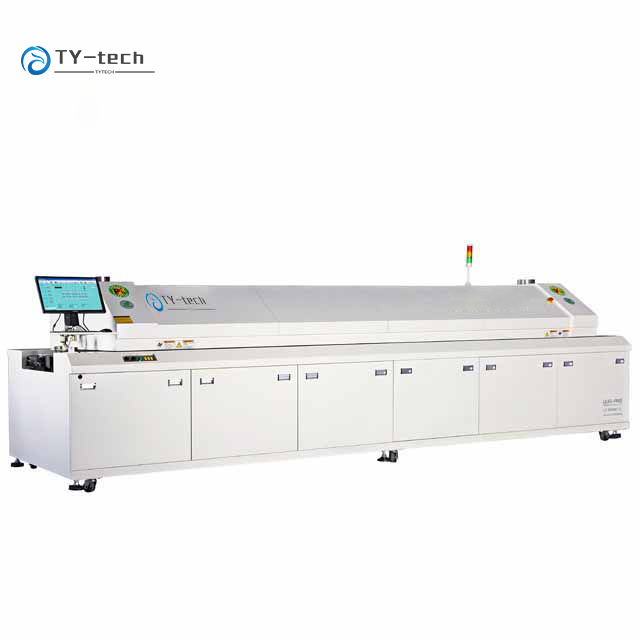Set the preheating temperature: The preheating temperature refers to the process of heating the plate to an appropriate temperature before welding. The setting of the preheating temperature should be determined according to the characteristics of the welding material, the thickness and size of the plate, and the required welding quality. Generally speaking, the preheating temperature should be about 50% of the soldering temperature.
Set the soldering temperature: Soldering temperature refers to the process of heating the board to the appropriate temperature to melt the solder and bond it together. The setting of the welding temperature should be determined according to the characteristics of the welding material, the thickness and size of the plate, and the required welding quality. Generally speaking, the soldering temperature should be about 75% of the soldering temperature.
Set the cooling temperature: the cooling temperature refers to the process of reducing the plate from the welding temperature to room temperature after the welding is completed. The setting of the cooling temperature should be determined according to the characteristics of the welding material, the thickness and size of the plate, and the required welding quality. – Generally speaking, the cooling temperature can be set lower than the room temperature to avoid stress relaxation of the solder.
In short, the temperature adjustment of the reflow oven needs to be carried out according to the specific situation, and it needs to be determined according to the soldering material used, the thickness and size of the plate, and the required soldering quality. At the same time, it is necessary to adjust the temperature controller according to the type and usage of reflow soldering to ensure that the temperature of reflow soldering operates stably within the set range.
Post time: Jul-26-2023





